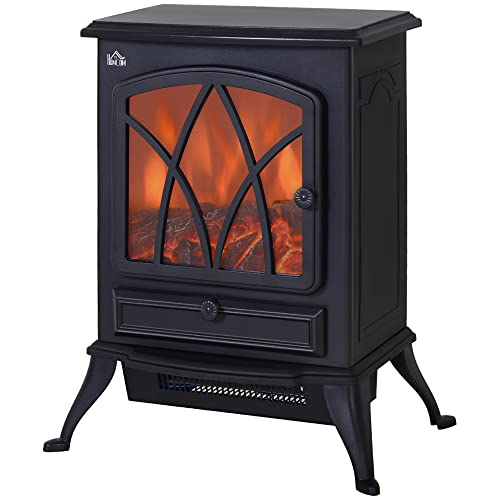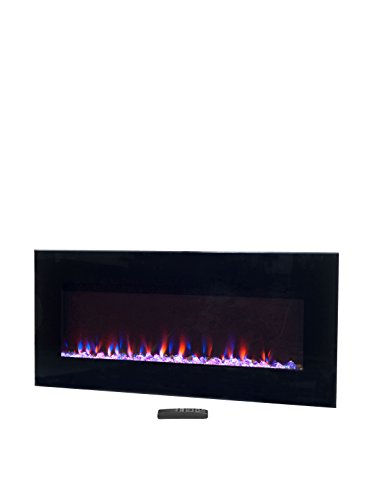
Fireplaces And Stove
Add a review FollowOverview
-
Founded Date dezembro 2, 1960
-
Sectors Motorista
-
Posted Jobs 0
-
Viewed 54
Company Description
25 Amazing Facts About Wood Burner Fireplace
 How to Get the Most From a Wood Burner Fireplace
How to Get the Most From a Wood Burner Fireplace
 Unlike traditional open fireplaces wood stoves are specifically designed and optimized to burn firewood. This allows them meet stricter emission regulations.
Unlike traditional open fireplaces wood stoves are specifically designed and optimized to burn firewood. This allows them meet stricter emission regulations.
Wood burning stoves create glowing yellow flames that dance and warm crackling sounds. They also give you a primal feeling of warmth. The smoke that is generated is filled with harmful air pollutants such as benzene, formaldehyde, and polycyclic aromatic hydrocarbons.
Efficient
Fireplaces and stoves that burn wood provide a beautiful and natural heat to your home, and they are incredibly efficient. A high-quality wood burner can be able to achieve an Ecodesign rating of as high as 77%. It is essential to get the most value of your wood burner particularly with the rising energy costs. The good news is it’s easier than ever to do!
One of the main factors that determines the efficiency of the wood-burning stove is is the water content of the wood. We recommend using only well-seasoned wood that has been dried over a period of at least one year, and often two years. The more dry the wood, the better it burns. This means lesser smoke and fewer harmful emissions.
Another great benefit of a wood burning stove is that it’s a low carbon source of fuel, which is excellent for the environment. Additionally, by purchasing locally-sourced firewood, you’re helping to promote the active management of woodlands, which is a great aspect for wildlife.
In terms of maintenance concerned, the primary requirement for a wood stove is to take out and dispose of the ash. It can be somewhat of a hassle however it is worth it to get the maximum heat from each log. If you wait for the ashes to cool completely and then, they can be used as a non-toxic and environmentally friendly ice melt. They can also be used to polish jewellery and remove the odors.
A fireplace that burns wood is an old-fashioned classic. Although they are less popular than gas Fireplaces And Stove, the allure and appeal of a fire that is roaring can’t be denied. These fires are great to cuddle up with on cold nights, and they create a warm and welcoming space in your home. Making the investment in a top-quality wood burner will pay for itself for many years. Contact us today to find out more about how our expert chimney sweeps can help you get the best out of your stove.
Low Carbon
Wood burners that are efficient and clean are one of the best ways to save money on logs and keep your home warm. They also support local woodland management. This is an excellent option to help wildlife in your area.
Wood-burning fireplaces and stoves create very little pollutant if they are maintained properly and are used with dry, seasoned and dry firewood. If they are not properly maintained or when they use wood that is of poor quality, the smoke that is produced is a result of fine particles, often referred to as particulate pollutants, which can irritate lung organs and other body organs. It also contains carbon monoxide and toxic air pollutants such as formaldehyde, benzene, and polycyclic aromatic hydrocarbons. Inhaling air pollution can cause lung irritation and lead to asthma attacks wheezing, coughing, and lung irritation. It could also cause cancer, heart disease or premature death.
Some people are worried that wood-burning stoves cause climate change, but this isn’t necessarily true. Burning wood is a carbon neutral energy source. In the course of the life of a tree it absorbs carbon dioxide, and when burned the carbon dioxide absorbed is released back into the atmosphere.
The wood is produced locally, which reduces the amount of pollution produced during the transport process. It is crucial to choose hardwoods that are seasoned and of high quality. They will burn longer and more evenly than softwoods.
Modern wood stoves, including the ones manufactured by Charlton & Jenrick, emit significantly less pollutant than older stoves. They are certified to meet 2020 EPA standards that are significantly stricter than earlier emission limits.
All wood burning stoves must be fully vented to the outside of your property to ensure that they don’t create a haze of exhaust within your home. All of our current DEFRA-exempt, clean-burn stoves produce extremely clear exhaust by keeping the flames above the wood logs and by using dry and seasoned firewood.
A wood burning stove with a catalytic converter or a hybrid unit can provide the best low-carbon option for heating. These units re-ignite the particulates and gases from the initial combustion at a later stage by mixing them with superheated air. They then funnel the remaining gasses and particulates through a catalytic combustion combustor for the third and final combustion, reducing emissions to a level much lower than the standards set by the government.
Clean Burn
Cleanburn wood stoves burn fuel at the highest efficiency. This results in a minimum amount of particles emitted into the atmosphere when burning wood. The air management system of the stove controls the intake and ventilation of gases to ensure that the combustion process takes place in a safe and controlled environment. It also regulates the flame’s height to minimize emissions and increase heat output.
This means that your chimney as well as the surrounding area will be much cleaner than older stoves. Particulate matter (also called particle pollution) from incompletely combusted wood causes respiratory issues like wheezing and coughing and contributes to the development of heart disease as well as stroke, diabetes, and other serious health conditions. Wood burning can also contribute to poor air quality in cities.
Smoke from poorly burned timber contains fine particulate pollutants and harmful air pollutants such as carbon monoxide and other hazardous air pollutants, such as nitrogen oxides as well as volatile organic compounds (VOCs) as well as benzene and formaldehyde. These particles can reach deep into the lungs and other organs which can cause discomfort, damage and even death. Airborne dust can also damage surfaces within your home, giving them a gritty feeling.
It’s important to use only high-quality, seasoned and dried firewood when you use your fireplace with a wood burner. The most efficient woods for heating are hardwoods like beech, oak and ash. Hardwoods are extremely dense and have higher BTU content than softwoods. They also have more heat.
You should also determine if your local authority has regulations regarding wood burning. These rules may include rules on odors and nuisances, as well as visible smoke emissions or smoke opacity restrictions.
If you have a wood stove with glass doors it is essential to keep the glass free of dirt and deposits. This can be done with dry cloths or oven cleaner spray. You can also add bicarbonate of soda with a little water to the glass.
Regular maintenance of your chimney and stove is also vital. Regular chimney cleanings are necessary to get rid of creosote and to ensure that the flue is operating correctly. You should also mark the dates of periodic inspections on your calendar. This will allow you to avoid costly repairs and prolong the life of your wood stove.
Low Maintenance
Wood burning fireplaces are popular because they offer natural warmth. This type of fireplace requires a bit of maintenance and upkeep. If not cleaned and maintained regularly the chimney, flue and stove could be potential sources of fires within your home. Fireplaces can also provide heat in the event of an electrical outage, especially during winter storms, when tree branches can fall and power lines may be knocked down.
Utilizing a wood burner to heat your home will reduce your carbon footprint significantly when compared to other fossil fuel sources, such as gas. Modern wood stoves and inserts have been designed to conform to EPA (Environmental Protection Agency) standards, which means that they produce very low emissions. The more seasoned wood you use the more efficient your stove will be. You’ll need less wood to get the same heat.
These fireplaces require some upkeep and attention, such as ensuring they are positioned away from combustible materials and a screen is installed. Making sure the grate is free of ash and debris will help air flow and prevent the fire from dying quickly. It will also help keep your indoors clean. It is recommended that your stove and chimney swept every year at least two times to prevent the build-up of creosote which could create a dangerous fire hazard and a blockage that can hinder ventilation.
A wood burning stove will need to be kept in good order and it could take some time for a novice homeowner to understand how to ignite, light and maintain a constant fire in the fireplace. However, once you have achieved the art of creating and maintaining an open flame in your wood burner, it will be a source of lasting pleasure that will provide heat and warmth for your home year after year.
Wood-burning fireplaces have been around in some form or another for more than 500 years and have rediscovered their popularity due to their efficiency, sustainability, and the natural warmth and smell of real wood. If you’re thinking of buying the purchase of a new heater, consult with your local certified Regency dealer to learn more about the benefits of an insert or stove made of wood for your home.
